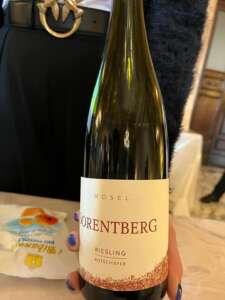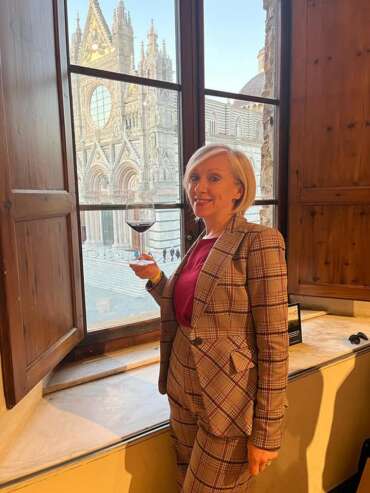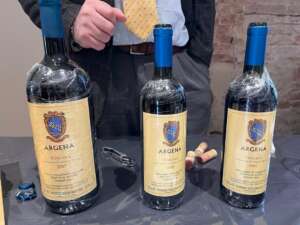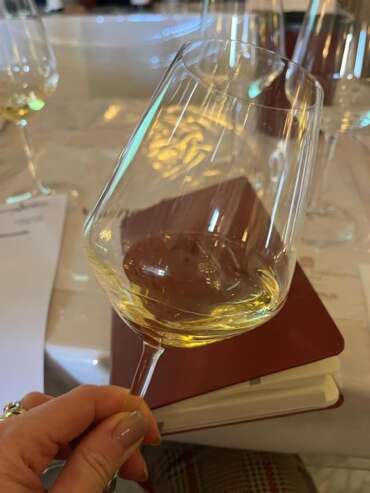Wine & Siena 2023: a wonderful opportunity to see sommelier friends again and share tastings, impressions and news in the unique and always very exciting setting of the museum complex of the former Santa Maria della Scala hospital in Siena.
Lots of rounds at the tasting counters on the ground floor and on levels 6 and 7, above all the Timorasso vertical of Massimo Pastura by FARMSTEAD LA GHERSA, pinot blanc, chardonnay and pinot noir from Castelfeder Winery and in Tuscany, among the many tastings, the stately wines of Argena and the goodies of the Casale Farm







The icing on the cake was a magnificent masterclass on Rhine riesling given by Ivan Giovannet of Castelfeder.
I was already familiar with Castelfederer from having dropped into the winery during one of our pilgrimages to the Dolomites a few years ago: they received me without an appointment and still gave me a good tasting. And I had already gotten to know Ines, Ivan's sister, at one of the past editions of Wine & Siena. This masterclass was really a journey into Mosel Riesling, a story of a real heroic viticulture.

With the replanting of the traditional Reiler Sorentberg vineyard in a side valley of the Middle Mosel in Castel Arras, two young winemakers Tobias Treis (Reil/Mosel/Germany) and Ivan Giovanett (Neumarkt/Südtirol/Italy), friends since their university days in Geisenheim and Riesling enthusiasts, realized their long-awaited dream of growing their own Riesling in 2011 by bringing back to life a unique vineyard that had been forgotten for decades.
Sorentberg is unique in the entire Mosel for the so-called "Wissenbacher Schiefer" (red slate soil with shell inclusions). Nearly 1,000 vines were discovered in the extremely steep upper part, the so-called 1000 Alte Reben, Rieslings with roots that are about 70 years old characterized by lower growth, deeper roots and more intense berries.
The wines in the tasting:
- Sorentberg 2019: Riesling from young vines, riesling's classic hint of yellow peach and the spicy aromas characteristic of red slate
- Sorentberg 2019: Riesling from old vines (100-year-old free-standing), hint of peach and nice citrine component
- Sorentberg 2016: Riesling from young vines, a definite floral coupled with a nice mineral streak and marked acidity
- Sorentberg 2016: Riesling from old vines, a beautiful golden color, hints of talc and dehydrated yellow fruit
- Sorentberg Kabinett 2020, first vinified in 2020 because the climatic conditions and amount of noble rot were ideal. Nice character, sweet but vertical
- Sorentberg Ausleese 2018, again first vinified an Auslese in 2018 as the weather conditions and amount of noble rot were ideal. Hints of herbs and chamomile with great freshness






For Riesling from new vineyards, the must ferments half in steel and half in wood, while for the Alte Reben The must ferments spontaneously in wood, and the wine then rests, again in wood, for 10 months.











